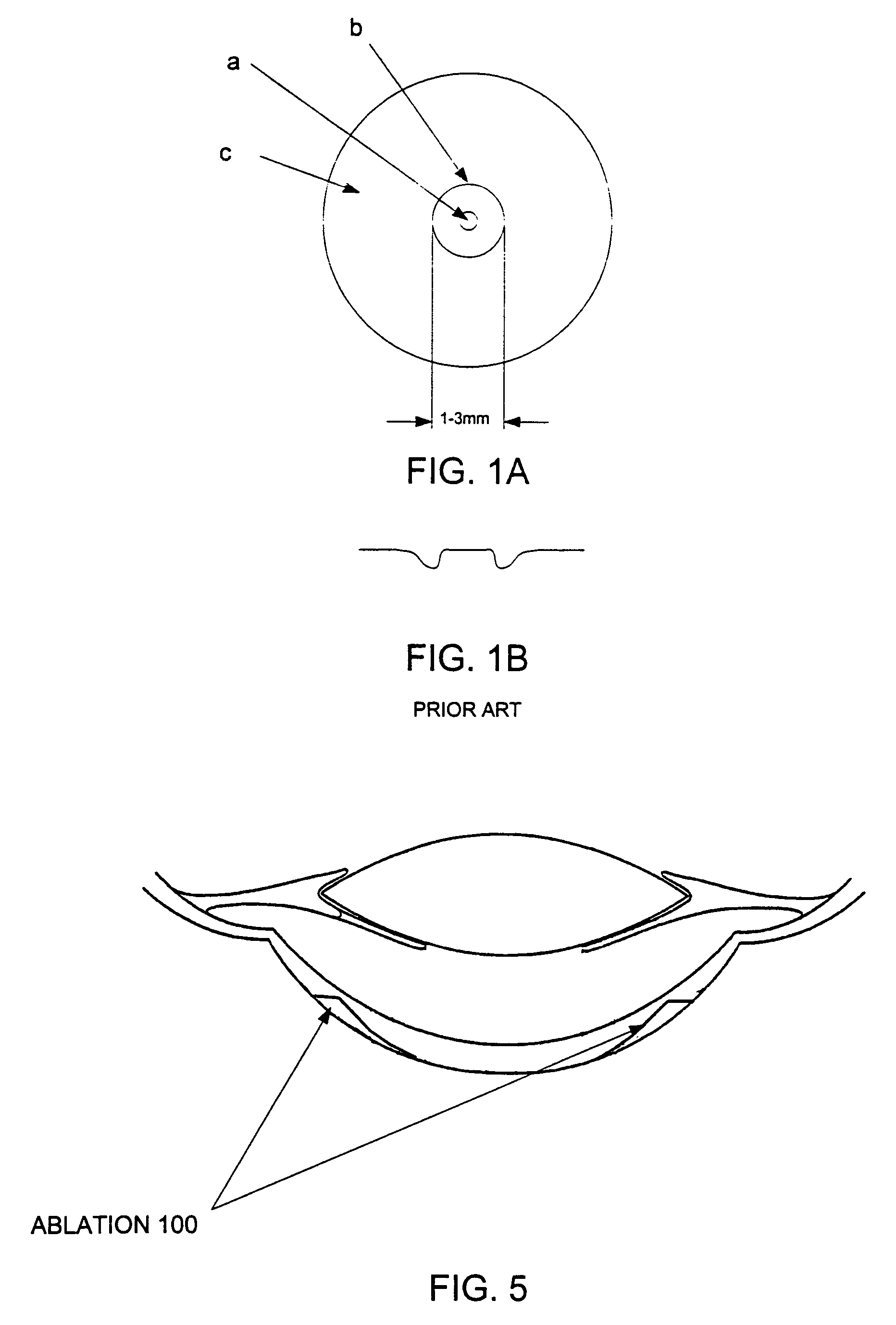Method and apparatus for treating presbyopia
- Summary
- Abstract
- Description
- Claims
- Application Information
AI Technical Summary
Benefits of technology
Problems solved by technology
Method used
Image
Examples
Embodiment Construction
[0029]Referring first to FIG. 1A, as mentioned above, prior to the present invention it was believed that for near vision the eye makes use of light entering the cornea through a central zone b having a diameter of about 3 mm. Accordingly, most prior art techniques consist of ablating tissue at various depths in the cornea in a central zone b extending between 1 mm and about 3 mm. A small spot of about 1 mm is not ablated. More importantly, the annular zone c extending from about 5 mm to 10+mm is not substantially ablated during this treatment. FIG. 1B shows a typical prior art profile resulting from central ablation. As can be seen in this profile, the central ablation is concentrated in the vicinity of the outer edge of zone b, i.e., at about 3 mm.
[0030]According to the present invention, the treatment should not be applied to the central zone of the cornea but to its outer peripheral zone. FIG. 2A shows a schematic view of the cornea with a central zone A of about 5.5 mm and an a...
PUM
 Login to View More
Login to View More Abstract
Description
Claims
Application Information
 Login to View More
Login to View More - R&D
- Intellectual Property
- Life Sciences
- Materials
- Tech Scout
- Unparalleled Data Quality
- Higher Quality Content
- 60% Fewer Hallucinations
Browse by: Latest US Patents, China's latest patents, Technical Efficacy Thesaurus, Application Domain, Technology Topic, Popular Technical Reports.
© 2025 PatSnap. All rights reserved.Legal|Privacy policy|Modern Slavery Act Transparency Statement|Sitemap|About US| Contact US: help@patsnap.com



